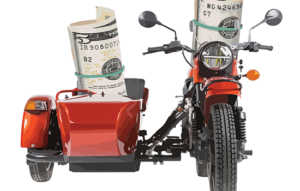 What is the most important priority when setting up your finances? Budgeting, an emergency fund, debt reduction, and retirement savings usually top of the list. Since budgeting incorporates all of these things, it would be first and necessary to accomplish the others. After that, your priorities tend to get pushed to whatever causes the most stress. Beware, it may likely cause you to neglect the others.
What is the most important priority when setting up your finances? Budgeting, an emergency fund, debt reduction, and retirement savings usually top of the list. Since budgeting incorporates all of these things, it would be first and necessary to accomplish the others. After that, your priorities tend to get pushed to whatever causes the most stress. Beware, it may likely cause you to neglect the others.
Most Americans stress over debt more than anything else. Money is ranked as the top worry for most Americans, ranking higher than health, family, and work, according to BlackRock’s Global Investor Pulse. Fifty-eight percent of people ages 18 to 34 say they are too focused on their current financial situation to save for the future. You simply can’t dig out of a hole unless you tunnel an upward path back to the surface. Otherwise, you will be dig the hole deeper and deeper.
More than 57% of Americans have less than $1,000 in savings that could be used in case of an emergency according to a Bankrate survey. When emergencies arise, the car breaks down, the water heater goes out, or someone takes an unexpected visit to the ER, the only option most Americans can turn to is debt.
What to do? Prioritize! Budget first, then focus on emergency funds and retirement savings, followed by debt reduction. This order works because it keeps you from adding additional debt and digging a deeper hole. Diverting money to an emergency fund and retirement savings before attacking debt seems counter productive. But, putting those foundational blocks in place gives you something to stand on to help you climb out of the financial hole.
In 2018, a bipartisan senate bill introduced the idea of “sidecar savings” accounts to increase access to workplace savings while avoiding retirement account leakage. The bill has not passed the Senate, but since its announcement, some retirement programs have been implementing after-tax approaches to increase emergency savings.
The basic idea works as follows: you make after-tax contributions to your retirement account, upon which you can draw if an emergency arises. This type of plan increases funds into your retirement account. Those funds add compounding interest to your retirement balance, while at the same time, participants are building emergency funds to be accessed in a pinch.
At the Board of Retirement, for example, participants can contribute after-tax dollars into their retirement accounts that will earn interest on a pre-tax basis. Since the after-tax contribution is accounted for separately than the earnings, an emergency withdrawal of contributions doesn’t trigger a taxable event. And, the retirement account isn’t completely wiped out, requiring the participant to rebuild the account entirely. Keeping participants from having to start “from scratch” gives them a step up to get back to the surface level again.
Fifty-eight percent of millennials say they are too focused on their current financial situation to save for their future. Creating the ability to have a “two birds, one stone” scenario helps take some of the burdens off when setting up your financial plan. By using sidecar savings, you not only protect yourself from falling further into debt when emergencies arise but also build a bridge toward saving for the future.
With these foundational blocks in place, you can get out of your financial hole and get back on top.
**Adopted from ONE Magazine

